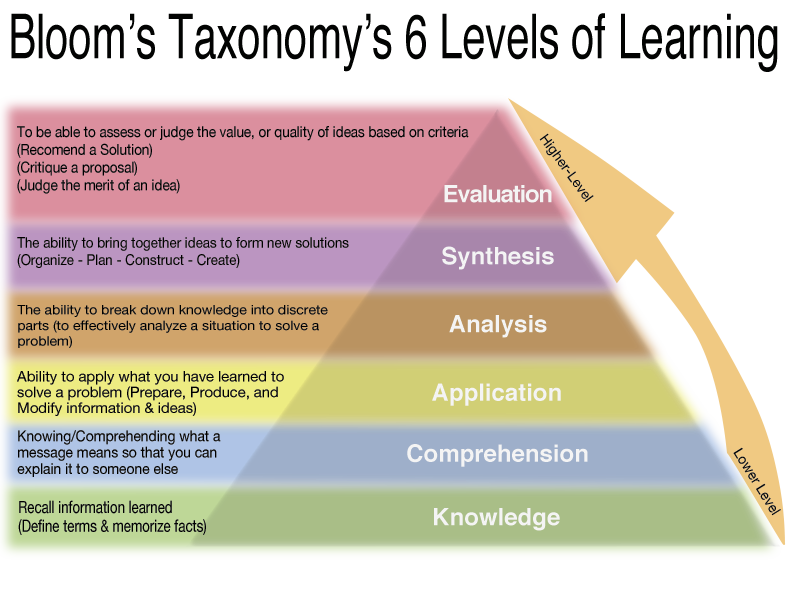Writing Measurable Learning Objectives
When you begin creating a course, you want to design with the end in mind. The best way to approach this is to start by writing measurable, learning objectives. Effective learning objectives use action verbs to describe what you want your students to be able to do by the end of the course or unit. Aligning assessments with course expectations is much easier when you have written measurable objectives from the beginning.
- Identify the noun, or thing you want students to learn.
- Example: seven steps of the research process
- Identify the level of knowledge you want. In Bloom’s Taxonomy, there are six levels of learning. It’s important to choose the appropriate level of learning, because this directly influences the type of assessment you choose to measure your students’ learning.
- Example: to know the seven steps of the research process (comprehension level)
- Select a verb that is observable to describe the behavior at the appropriate level of learning.
- Example: Describe these steps
- Add additional criteria to indicate how or when the outcome will be observable to add context for the student.
- Describe the seven steps of the research process when writing a paper.
Here are some examples of learning objectives we’ve seen and how we revised them:
Course level outcome examples
- Original version: Understand the American criminal justice system.
- Revised version: Describe the history of the American criminal justice system.
Understand is not a measurable verb, however the intent of the instructor was to have the students be able to describe, which is measurable.
- Original version: Describe and create a social media plan for your organization.
- Revised version: Create a social media plan for your organization.
Describe and create are two different levels of learning, and it’s strongly suggested that you avoid having more than one action verb. Create is a higher level of learning than describe, therefore it can be assumed that you will be able to describe the process prior to applying it.
Unit level examples
- Original version: Understand elements of editing.
- Revised version: Identify elements of editing, including composition, setting and lighting.
Understand is not a measurable verb, and it was too broad for a unit level objective. Therefore, we narrowed the focus.
- Original version: Complete the quiz.
- Revised version: None
Complete the quiz is an action item for the student, not a learning objective. If your assessment is being used to meet your objective, then you will want to write a measurable objective that describes the content of the assessment. For a course to meet the Quality Matters standards, it must have learning objectives that are measurable and the assessments must align with the learning objectives. For example, if your learning objective has the action verb “identify”, then you do not want to have an assessment that is above that level of learning, such as analyzing the topic. On the other hand, if you have an application level verb, such as “design”, then you do not want to assess the learning objective with only a multiple choice, knowledge level quiz. Remember, when creating assessments, look at the action verb being used for your learning objective and the level of learning to apply. Co-written with fellow Quality Matters expert, Steven Crawford. Bloom’s image created by Alyssa Robinson.



